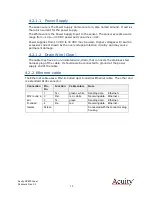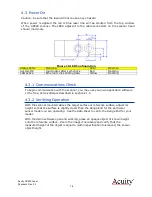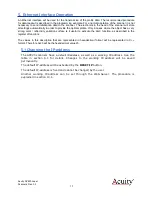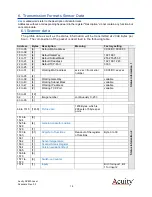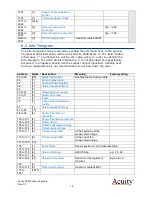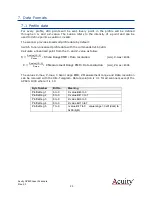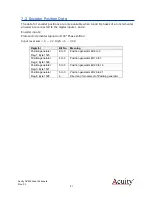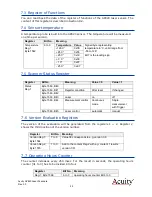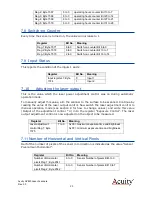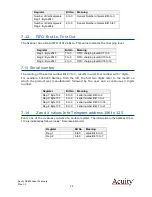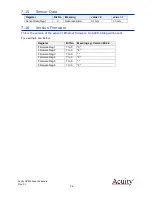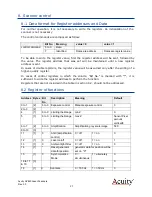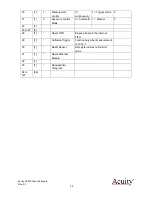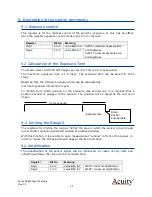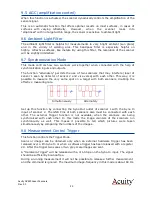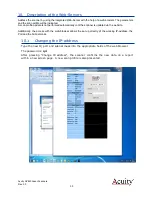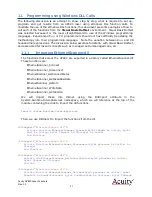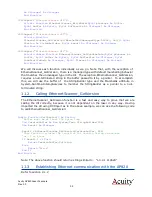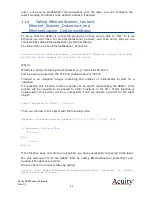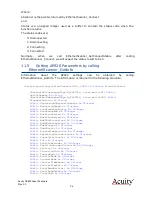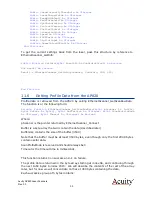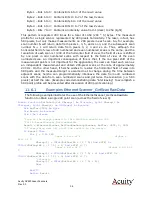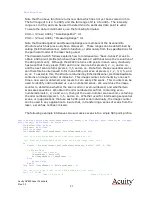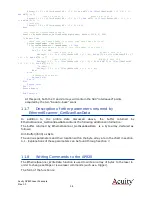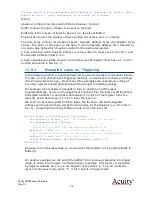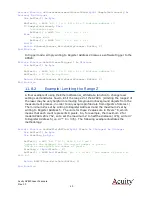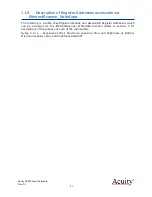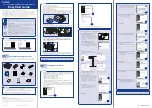
Acuity AP820 Laser Scanners
Rev. 3.3
29
9.5 AGC (amplification control)
When this function is activated, the scanner dynamically controls the amplification of the
sensor signal.
This is an automatic function that offers optimal results on most surfaces, in cases of
surfaces with varying reflectivity. However, when the scanner looks into
"emptiness“ with no target within range, the sensor is sensitive to ambient light.
9.6
Ambient Light Filter
The ambient light filter is helpful for measurements in very bright ambient (sun glare)
and in the vicinity of welding arcs. This bandpass filter is especially helpful on
highly- reflective surfaces, like metals. By using this filter, the resolution of the scanner
will be slightly diminished.
9.7
Synchronization Mode
This mode controls how two scanners work together when connected with the help of
synchronization inputs and outputs.
The function "alternately” permits the use of two scanners that may interfere (laser of
sensor 1 seen by detector of sensor 2 and vice versa) with each other. This way, it is
possible to measure the very same spot on a target with both scanners, doubling the
effective measuring rate.
Simultaneously
Alternately
Set up this function by connecting the Sync-Out outlet of scanner 1 with the Sync-In
input of scanner 2. The GND Pins of both scanners also must be connected with each
other. The external Trigger function is not available, when the scanners are being
synchronized with each other. In this mode the image counters of the scanners run
synchronously as well. This makes it possible to tell which pictures were taken
simultaneously by comparing the numbers of the images.
9.8
Measurement Control Trigger
This function controls the Trigger Mode.
Scans or images can be obtained only when an external hardware trigger has been
released over a Pin Sync-In or when a software trigger has been released with a register
29. After the trigger two scans or two grey scale images are sent.
A "Hardware-Trigger” will be released with a 0/1-Slope on the Sync-In input. The signal
should be sufficiently bounce-free.
During a running measurement it will not be possible to release a further measurement
and the command is ignored. The maximum image-frequency in this mode is about 60 Hz.

